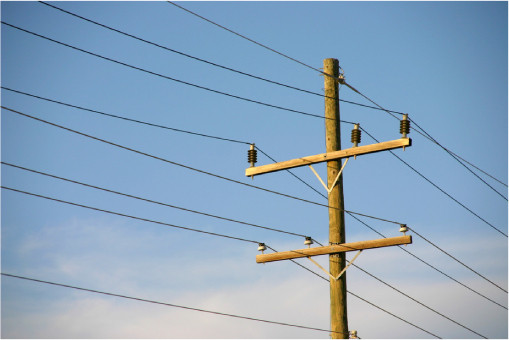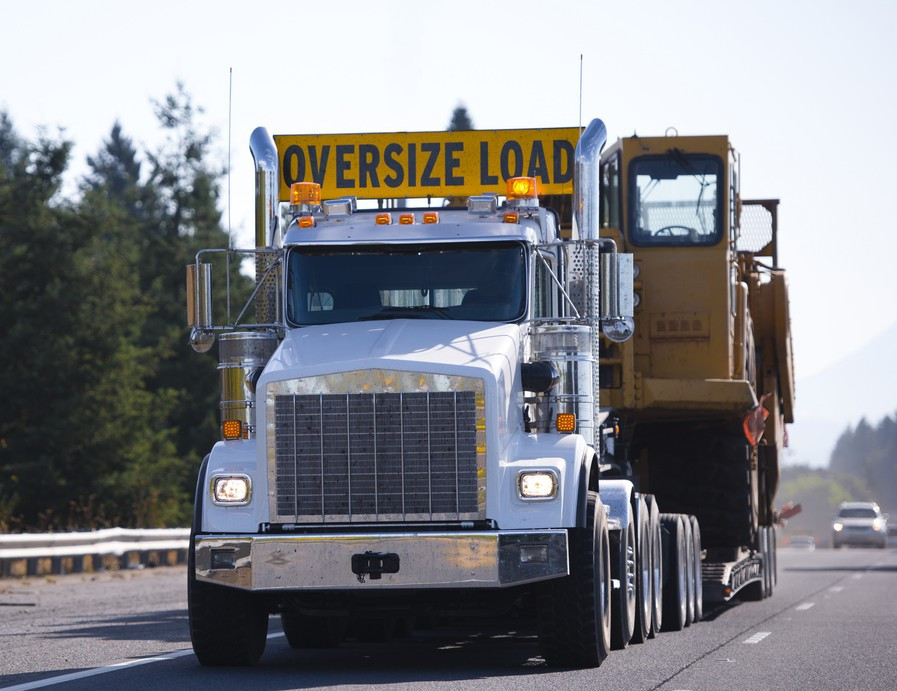Before You Move Elevated Loads
- Always assume overhead lines are live.
- Request a high load move clearance from Pelican Energy TCI before starting any project.
- Click or Call Before You Move
- Online: www.pelicanenergytci.com/safemoves
- Phone: 649-946-4313 (Mon–Fri, 9 AM–4 PM)
What Counts as an Elevated Load?
If you are moving or operating an elevated load within 13 feet (4 meters) of an overhead power line, you’ll need clearance. If you are in doubt, contact us to verify.
An elevated load is generally defined as:
- A load that exceeds the height specified by the power system owner and outlined in utility sector regulations.
- Any equipment or cargo that, when moved, could encroach within the minimum safe clearance distance of overhead power lines. These items pose a potential hazard due to its height or movement.
The Safety Risks
Striking a buried line with heavy equipment, or hitting overhead lines with high loads can cause:
- Serious injury or death
- Major power outages
- Thousands in repair and service costs
- Delays to your project and disruptions to your community
Even without direct contact, electricity can arc—or “jump”—from a power line to nearby conductive equipment.
When equipment touches a power line, it endangers both the operator and anyone nearby. The electrical current can travel through the equipment into the ground, creating a high-voltage zone around the contact point. This voltage radiates outward in waves, energizing anything in contact with the ground.
Heavy equipment such as cement pump trucks, cranes, and boom trucks must never operate above or within reach of overhead power lines. Doing so is both a serious safety risk and a violation. Work in these cases should only proceed after the power system owner provides clearance and establishes special pre-engineered safety controls.
Coordinating with Pelican Energy TCI and securing the necessary clearances are essential steps to avoid service interruptions and uphold public safety.
If You Intend To Move A High Load
If your equipment or elevated load is expected to move along public roads, highway, or utility right-of-way, you must:
- Secure clearance from Pelican Energy TCI.
- Allow enough time for Pelican Energy TCI to assess risks, provide safety guidance, and possibly escort the move.
Under regulation, contractors, or anyone planning to move an elevated, is required to obtain an assurance in writing from the power system owner.
Pelican Energy TCI will ensure that all contractors and external parties submitting such requests understand the hazards of working near energized overhead power lines.
For lines below 750 volts:
Pelican Energy TCI still requires a high load request, and a written clearance will be provided as a record of safety information shared with you.
- This applies to everyone—contractors, heavy machinery operators and external utility crews.
- Planning safe moves should be part of your job preparation.
Minimum Overhead Clearance Distances
| Voltage Range |
Minimum Clearance |
| Less than 750 Volts |
3 ft (~1 metre) |
| Aerial Powerline < 25,000 Volts |
6 ft (~2 metres) |
| 751 Volts to 75,000 Volts |
10 ft (~3 metres) |
| 75,000 Volts – 150,000 Volts |
15 ft (~4.5 metres) |
How to Submit A High Move Request
Submit a request with your load, route and other important project details online via www.pelicanenergytci.com/SafeMoves or call 649-946-4313. Submit your request a minimum of five business days in advance of a planned move.
Pelican Energy TCI receives and processes routine phone-based locate requests between 9:00 a.m. and 4:00 p.m., Monday through Friday, except holidays.
Only emergency move requests are processed after hours and on public holidays.
- Within five business days of your request, Pelican Energy TCI will:
What to Expect in a Clearance Response
Once it’s been confirmed that a clearance can be issued, the clearance will clearly show all the important details to ensure everyone involved understands the work and safety requirements. This includes:
- The voltage level of the power line
- The exact location where the work will take place
- A brief description of the work
- The start and end dates for the clearance
- The minimum clearance distance required based on the voltage
- Sketches or diagrams to help visualize the setup
- Any other relevant information that helps clarify the scope and safety measures
Both the external party requesting the clearance and the authorized Pelican Energy TCI representative must review and sign off on the completed clearance.






